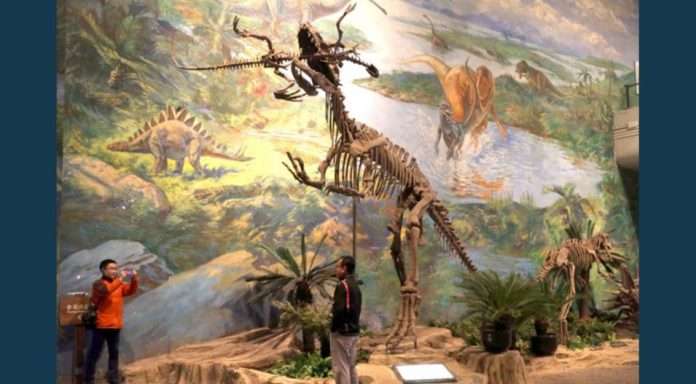
March 5 (UPI) — A new species of stegosaur — Bashanosaurus primitivus — is the oldest ever found in Asia, according to research published Thursday.
The peer-reviewed research published in the Journal of Vertebrate Paleontology said this new species is the one of the oldest discovered anywhere on Earth.
Bones of this stegosaur were discovered by a team from the Chongqing Bureau of Geological and Mineral Resource Exploration and Development in China and London’s Natural History Museum.
Bones from the back, shoulder, thigh, feet and ribs were found along with some armor plates.
The Journal of Vertebrate Paleontology article concluded that, “Bashanosaurus primitivus is the earliest record of Stegosauria in Asia and represents one of the earliest records of this clade from anywhere in the world. Geochronological data and analysis support a Middle Jurassic (Bajocian) age for the Shaximiao Formation in the vicinity of Pu’an Township, China.”
Bashanosaurus primitivus was on Earth approximately 168 million years ago in the Middle Jurasic period, according to the research.
The bones discovered revealed a smaller, less developed should blade. The armor plate bases were narrower and thicker compared with all other Middle Jurassic stegosaurs discovered so far.
Dr. Dai Hui of the Chongqing Bureau of Geological and Mineral Resource Exploration and Development was lead researcher on the discovery.
“All these features are clues to the stegosaurs’ place on the dinosaur family tree,” Dr. Dai Hui told Phys.org, “Bashanosaurus can be distinguished from other Middle Jurassic stegosaurs, and clearly represents a new species.”
The remains discovered indicated a small dinosaur.
“Based on the hindlimb size of Bashanosaurus primitivus, we estimate its total length is about 2.8 m,” the research article said, “it is possible that this small size indicates that the holotype may be a subadult, an inference supported by a lack of fusion between the scapula and coracoid and the tibia and fibula; fusion between these elements is seen in adults of Stegosaurus but not in juveniles.”



